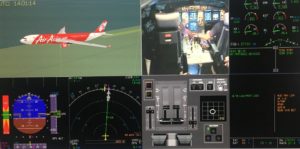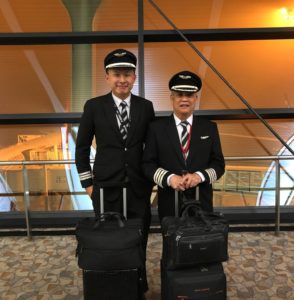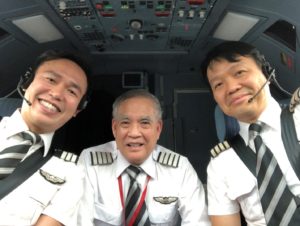What does IOSA certification really mean? Please read on to understand the stringent safety measures that govern the aviation industry.

An Airbus A330 Flight Simulator
Last September, AirAsia X Malaysia was officially recognised as an IOSA – International Air Transport Association (IATA) Operational Safety Audit – registered operator. More stringent than the ISO 9001, which is the ground industry quality standard, the IOSA is an internationally recognized evaluation system designed to assess an airline’s general safety standards.
As the IOSA is regarded by the aviation industry as the global benchmark for safety, AirAsia’s IOSA certification is a great achievement. The rigorous training that pilots undergo using flight simulators and improvements in Crew Resources Management (CRM) – a psychological training tool – are among some of the significant measures that play an important role in an airline’s successful completion of the IOSA certification.
Learning by Simulation
The flight simulator is one of the most effective tools in pilot training. It allows various manoeuvres, like making smoother and safer landings in crosswinds, to be simulated and practised, ensuring pilots become highly proficient in their navigation skills.
Among the many instruments in the flight simulator, I particularly find the Back-Up Speed Scale (BUSS) to be a very important and useful flight instrument. Here pilots are trained to fly the BUSS to hone their skills in order to cope with loss of airspeed in flight.
A pilot’s performance in the flight simulator can also be analysed from the video recordings. If the simulated landing is not smooth, the trainer can show the pilot what could have been done differently.
Feedback like this is a great help in improving the pilot’s technique for better and safer landings in the future.

Besides flight simulators, CRM is also used to improve flight safety. The CRM training, which focuses primarily on developing skills in leadership, communication and decision making, is aimed at managing and mitigating slip-ups, and has proven to be vastly effective. To enhance the CRM programme, safety ‘audits’ or Flight Operations Data Collection (FODC) flights are conducted to assess the pilot’s safety operations.
Observers (including myself) are planned on scheduled flights to record not only CRM practices, but also to note how potential risks and inaccuracies are trapped (meaning prevented from recurring) and managed.
The safety auditors then provide reports to airlines on how the standard operating procedures have been observed and, if necessary, what actions carriers can take to further improve safety.
Although I do not fly commercially anymore (the legal international flying age is 65 years), as a member of the FODC team – involved in collecting data and providing feedback to pilots to help them further improve safety in future flights – I am sometimes still seen in uniform.

Yours Truly in Uniform on a Safety Audit flight in Shanghai, China
Old vs Bold
As I board the plane with the crew, I occasionally get quizzical looks from passengers, who are no doubt wondering if I would be piloting the plane; at 73 years old, my many years of experience are evident in my grey hair.
There is an old aviation adage that goes: ‘There are old pilots and bold pilots, but no old, bold pilots’. This means: pilots should not allow their ego to rule their actions and it is wiser to err on the side of caution.
The words are old but true. For instance, a pilot who encounters volcanic activity in the air should follow the Airbus drill and turn around 180 degrees, instead of charging ahead on the set route like American airmail pilots of days gone by, who had to keep to strict schedules regardless of dangerous conditions like rain, fog and blizzards!
The modern CRM programme has done away with many old, risky flying habits and bad practices. Nevertheless, the old-bold stories serve as a good reminder to younger pilots today to observe safety flight rules and to always opt for caution.

Wiser & Safer
Alexandre de Juniac, Director General of IATA,following his announcement in February that 2018 was an exceptionally safe year, said, “Flying continues to be the safest form of long distance travel the world has ever known.”
Good training has certainly made pilots wiser.
With that, I wish you a smooth and enjoyable flight.
Posted: 03.08.19